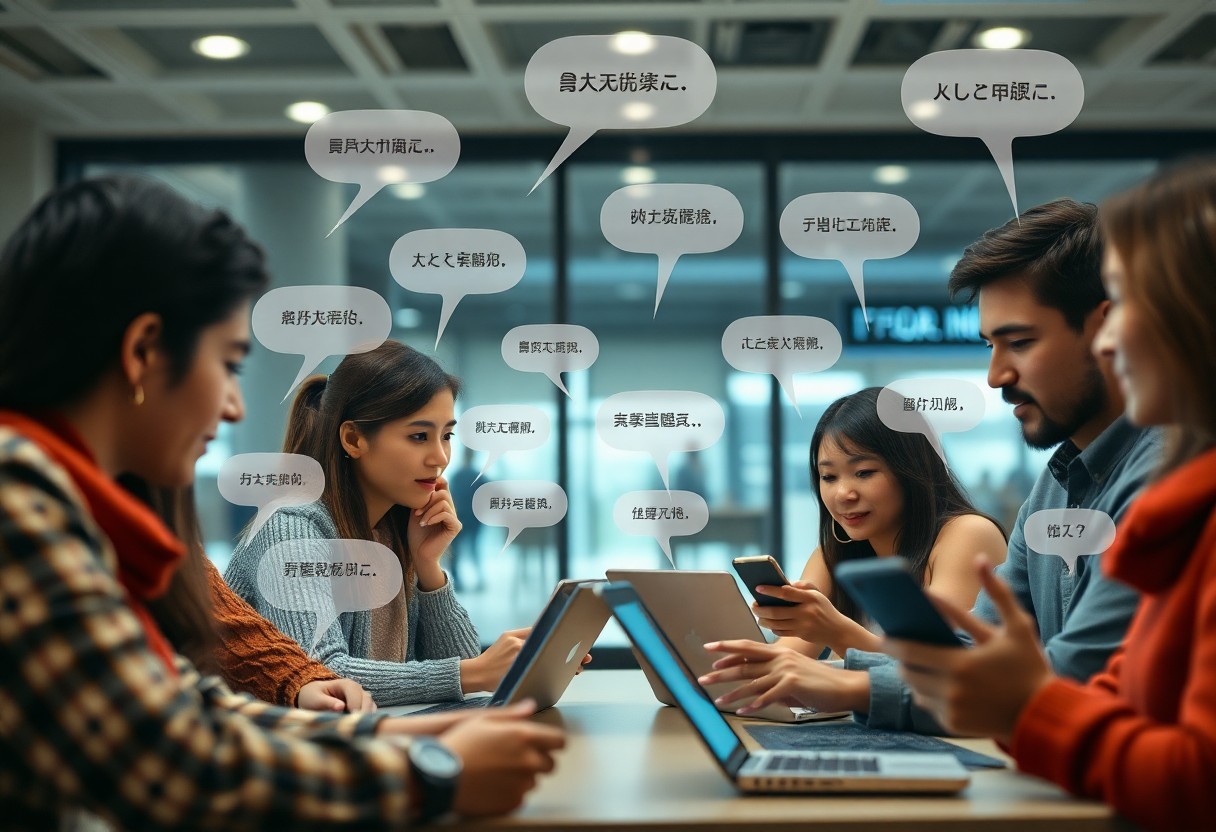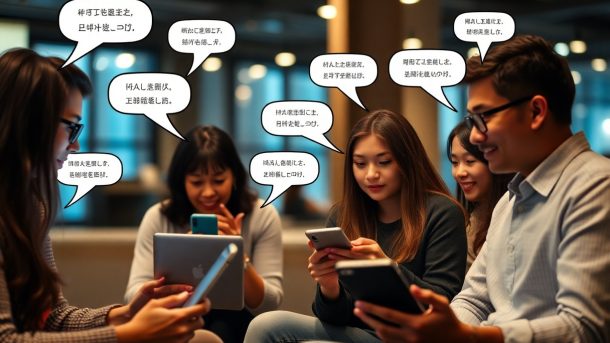As you navigate the global landscape, you encounter diverse languages and cultures. You may wonder how to bridge the communication gap between them. With the advent of AI agents, your interactions are becoming more seamless. You can now communicate with people who speak different languages, and AI agents will facilitate understanding. Your messages are translated in real-time, enabling you to connect with others worldwide, fostering global collaboration and exchange. You will discover how AI agents are revolutionizing multi-language communication, making it more accessible and efficient for you.
Key Takeaways:
To improve communication across languages, AI agents play a significant role. Here are the main points:
- AI agents enhance translation accuracy and efficiency, allowing for more effective global interactions and business expansions into new markets.
- They facilitate real-time conversations by instantly interpreting and translating languages, which helps in breaking down language barriers and fostering cultural understanding.
- AI-powered chatbots and virtual assistants use machine learning algorithms to improve language processing, enabling more personalized and intuitive interactions with users from diverse linguistic backgrounds.
Challenges of Multi-Language Communication
While engaged in global interactions, you face numerous obstacles that hinder effective communication, primarily due to language differences and cultural disparities that can lead to misunderstandings and misinterpretations.
Language Barriers
By overcoming linguistic obstacles, you can facilitate smoother interactions, but this often proves to be a daunting task, as language barriers can significantly impede the flow of information and ideas.
Cultural Differences
About the nuances of cultural diversity, you should consider that varying cultural backgrounds can influence your perception and expression, leading to potential conflicts and communication breakdowns.
To navigate these cultural differences effectively, you must consider the complexities of nonverbal cues, idioms, and expressions that are unique to each culture, and be aware that your own cultural biases can impact your understanding of others, making it imperative to approach each interaction with sensitivity and an open mind, allowing you to better grasp the subtleties of cross-cultural communication and foster more harmonious interactions.
Role of AI Agents in Language Translation
It is evident that AI agents play a significant role in breaking language barriers, and you can learn more about this topic in the article Language Learning and AI: Breaking Barriers to Global Communication. This technology enables you to communicate with people who speak different languages, facilitating global understanding.
Machine Learning Algorithms
Among the various techniques used in language translation, machine learning algorithms are particularly effective, allowing you to translate texts with high accuracy, and enabling you to understand the nuances of different languages.
Natural Language Processing
Behind the scenes of language translation lies natural language processing, which enables AI agents to understand and interpret human language, allowing you to communicate effectively with people who speak different languages.
Language processing involves complex algorithms that enable AI agents to analyze and interpret human language, allowing you to communicate with precision and accuracy, and as you probe deeper into this topic, you will discover the immense possibilities it offers for enhancing multi-language communication, enabling you to connect with people worldwide.
Benefits of AI-Powered Translation
Despite language barriers, you can now communicate effortlessly across the globe. AI-powered translation enhances your interactions, breaking down cultural and linguistic divides.
Improved Accuracy
Accuracy is key to effective communication, and AI-powered translation provides you with precise translations, ensuring your message is conveyed correctly.
Increased Efficiency
For instance, you can translate large volumes of text quickly, saving your time and effort, and enabling you to focus on more important tasks.
With AI-powered translation, you can automate your translation process, streamlining your workflow and increasing your productivity, allowing you to communicate with your global audience more efficiently.
Applications of AI-Enhanced Multi-Language Communication
To harness the power of AI-enhanced multi-language communication, you can explore various fields that benefit from this technology. You will discover how it breaks down language barriers and facilitates global interactions.
Business and Commerce
Any organization can leverage AI-powered translation tools to expand your market reach and communicate effectively with international clients. You can negotiate, advertise, and provide customer support in multiple languages, making your business more competitive.
Education and Research
An vital aspect of AI-enhanced multi-language communication is its potential to facilitate knowledge sharing across linguistic and cultural boundaries. You can access and share educational resources, collaborate with international peers, and participate in global research projects.
In addition, as you explore deeper into education and research, you will find that AI-enhanced multi-language communication enables you to learn from diverse perspectives, fostering a more inclusive and comprehensive understanding of various subjects. You can engage with academic materials, multimodal resources, and interactive tools, all tailored to your language preferences, making your learning experience more engaging and effective.
Limitations and Future Directions
Many AI agents still struggle with nuanced language understanding, which can lead to miscommunication in multi-language interactions, and you may encounter these limitations in your daily life as you interact with various AI systems.
Current Limitations
To better understand the current state of AI agents, you should consider the challenges they face in processing idioms, colloquialisms, and contextual references, which can hinder effective communication across languages and cultures, affecting your experience with these systems.
Emerging Trends
One of the most exciting developments in AI-powered communication is the integration of machine learning algorithms that can adapt to your language preferences and habits, enabling more personalized interactions, and as you explore these technologies, you will find that they can greatly enhance your ability to communicate across languages.
At the forefront of these emerging trends, you will find advancements in natural language processing and machine learning, which are enabling AI agents to learn from your interactions and improve their language understanding, allowing for more effective and seamless communication across languages, and as you investigate deeper into these technologies, you will discover new possibilities for enhancing your multi-language communication capabilities.

Implementing AI Agents in Real-World Scenarios
Unlike traditional methods, AI agents can enhance multi-language communication in various settings. You can explore how AI supports multilingual contact centers by visiting 3 ways AI supports a multilingual contact center to learn more about its applications.
Integration with Existing Systems
Along with advancing technology, you can integrate AI agents with your existing systems to facilitate seamless communication across languages, making it easier for you to connect with people worldwide.
Human-AI Collaboration
Around the clock, AI agents can assist you in breaking language barriers, enabling more efficient and accurate communication, which is especially beneficial in global business settings.
Agents can work alongside you, providing real-time translations and helping you navigate complex linguistic and cultural nuances, allowing you to focus on the content and context of the conversation, rather than struggling to understand the language itself, and thereby enabling you to communicate more effectively with your global audience.
Conclusion
On the whole, you can see that AI agents have revolutionized multi-language communication, enabling you to connect with people worldwide. As you explore these advancements, you’ll find that your interactions become more seamless and efficient, breaking down language barriers with ease. With AI by your side, your global conversations will become more accurate and nuanced, opening up new possibilities for collaboration and understanding.
FAQ
Q: What is the role of AI agents in enhancing multi-language communication?
A: AI agents play a significant role in enhancing multi-language communication by providing real-time language translation, enabling individuals who speak different languages to communicate effectively. These agents use advanced algorithms and natural language processing (NLP) capabilities to translate text, speech, and even gestures, facilitating seamless communication across language barriers.
Q: How do AI agents improve language translation accuracy in multi-language communication?
A: AI agents improve language translation accuracy through machine learning algorithms that learn from large datasets of translated texts, speeches, and conversations. These algorithms analyze patterns, nuances, and context to provide more accurate translations, reducing errors and improving overall communication quality. Additionally, AI agents can learn from user feedback, adapting to specific dialects, slang, and cultural references to enhance translation accuracy.
Q: Can AI agents facilitate multi-language communication in real-time, such as in video conferences or phone calls?
A: Yes, AI agents can facilitate multi-language communication in real-time, enabling participants who speak different languages to communicate seamlessly during video conferences, phone calls, or online meetings. These agents use advanced speech recognition and translation technologies to translate spoken language in real-time, allowing participants to engage in natural, flowing conversations, regardless of their language proficiency.
Q: How do AI agents handle cultural and linguistic nuances in multi-language communication?
A: AI agents are designed to handle cultural and linguistic nuances by integrating cultural intelligence and contextual understanding into their translation algorithms. These agents can detect idioms, colloquialisms, and cultural references, translating them in a way that is sensitive to the target culture and language. Additionally, AI agents can be trained on specific cultural and linguistic datasets to improve their understanding of nuances and subtleties, ensuring that translations are accurate, respectful, and effective.
Q: What are the benefits of using AI agents for multi-language communication in business and personal settings?
A: The benefits of using AI agents for multi-language communication in business and personal settings include increased productivity, enhanced collaboration, and improved relationships. AI agents can facilitate global communication, enabling businesses to expand into new markets, and individuals to connect with people from diverse linguistic and cultural backgrounds. Furthermore, AI agents can help reduce communication errors, misunderstandings, and conflicts, leading to more effective and efficient communication, and ultimately, stronger relationships and business outcomes.

